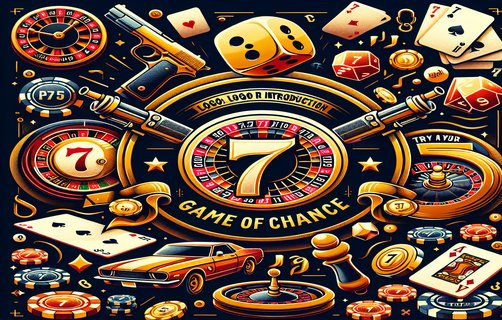Rummaging Through Strategy: A Deep Dive into Game Dynamics
रम्मी के खेल के गहराई में नई चर्चा
Rummy, a card game variant cherished across cultures, merges strategy with social interplay. Understanding its design elements enhances play and redefines player engagement. This analysis explores critical aspects: board rotation zones, initiative cards, objective tracker balancing, random game elements, action selection, and adjusting objectives rules.

The concept of board rotation zones is fundamental in rummy. These are dynamic spaces where players engage, encouraging movement and adaptability. The rotation introduces a spatial dimension that influences player strategy. As players rotate through zones, the likelihood of encountering varied cards affects decision-making processes. Each zone presents its own tactical advantages, fostering a multilayered approach to gameplay.
Initiative cards serve as catalysts for action. They determine player turns and influence the pace of the game. The importance of initiative cards lies in their ability to shift power balance, compelling players to alter their strategies based on the turn order. A well-timed initiative can dominate the game, while misplaced priorities can lead to disadvantageous turns.
Balancing the objective tracker is crucial for maintaining competitive integrity. This element functions as a metric for progression, allowing players to gauge their position and strategize accordingly. If left unchecked, the objective tracker might favor specific strategies over others, stifling diverse gameplay. Regular adjustments ensure that all players remain engaged, actively seeking opportunities to influence their standing.
Random game elements play a vital role in creating unpredictability. They introduce excitement and challenge, requiring players to adapt their strategies continually. However, excessive randomness can lead to frustration. By finding the right balance, rummy retains its strategic depth while inviting spontaneous gameplay experiences.
Action selection is another pillar of effective strategy. Players must prioritize their choices based on limited resources, trying to maximize their impact on the game. Each decision affects not just the player's outcome but can also pivot the direction of their opponents’ strategies. This interconnectedness amplifies the stakes of every turn.
Lastly, rules regarding adjusting objectives can transform gameplay dynamics. As the game progresses, situations may require alteration of goals. This fluidity acknowledges the ever-changing nature of strategy and fosters a more responsive environment. Such adaptability encourages players to continuously innovate and rethink their plans, making each session unique.
In conclusion, examining the interwoven elements of board rotation zones, initiative cards, objective tracker balancing, random game elements, action selection, and rules for adjusting objectives reveals the depth of strategy inherent in rummy. Each aspect iteratively shapes the game, offering opportunities for creative play and competitive tension. As players embrace these dynamics, rummy transcends simple card play, evolving into an intricate tapestry of strategy and interaction.

रम्मी, विभिन्न संस्कृतियों में प्रिय कार्ड गेम का एक रूप है, रणनीति और सामाजिक इंटरप्ले को जोड़ता है। इसके डिज़ाइन तत्वों को समझना खेल को बढ़ाता है और खिलाड़ी की भागीदारी को फिर से परिभाषित करता है। यह विश्लेषण महत्वपूर्ण पहलुओं की खोज करता है: बोर्ड रोटेशन क्षेत्र, पहल कार्ड, उद्देश्य ट्रैकर संतुलन, यादृच्छिक खेल तत्व, क्रिया चयन और उद्देश्य नियमों को समायोजित करना।
बोर्ड रोटेशन ज़ोन का विचार रम्मी में मौलिक है। ये गतिशील स्थान हैं जहां खिलाड़ी भाग लेते हैं, गति और अनुकूलन को प्रोत्साहित करते हैं। रोटेशन एक स्थानिक आयाम प्रस्तुत करता है जो खिलाड़ी की रणनीति को प्रभावित करता है। जैसे-जैसे खिलाड़ी ज़ोन के माध्यम से घूमते हैं, विभिन्न कार्डों का सामना करने की संभावना निर्णय लेने की प्रक्रियाओं को प्रभावित करती है। प्रत्येक ज़ोन अपनी रणनीतिक लाभों के साथ खेल को बढ़ावा देता है।
पहल कार्ड क्रिया के उत्प्रेरक के रूप में कार्य करते हैं। वे खिलाड़ी की बारी का निर्धारण करते हैं और खेल की गति को प्रभावित करते हैं। पहल कार्ड का महत्व इस तथ्य में निहित है कि वे शक्ति संतुलन को बदल सकते हैं, खिलाड़ियों को अपने रणनीतियों को बदलने के लिए मजबूर करते हैं। सही समय पर कार्ड गेम को नियंत्रित कर सकते हैं, जबकि गलत प्राथमिकताएँ हानिकारक मोड़ों की ओर ले जा सकती हैं।
उद्देश्य ट्रैकर का संतुलन बनाए रखना प्रतिस्पर्धात्मक समर्पण को बनाए रखने के लिए बेहद महत्वपूर्ण है। यह तत्व प्रगति के लिए एक मैट्रिक के रूप में कार्य करता है, खिलाड़ियों को उनके स्थान का आकलन करने और तदनुसार रणनीतिक सोच के लिए अनुमति देता है। यदि इसे अनियंत्रित छोड़ दिया गया, तो उद्देश्य ट्रैकर कुछ रणनीतियों को दूसरों पर अधिमानता दे सकता है, जो विविध खेल को दबाने का काम करता है। नियमित समायोजन सुनिश्चित करते हैं कि सभी खिलाड़ी संलग्न रहें, सक्रिय रूप से अपनी स्थिति को प्रभावित करने के लिए अवसरों की खोज करें।
यादृच्छिक खेल तत्व अप्रत्याशितता को उत्पन्न करने में महत्वपूर्ण भूमिका निभाते हैं। यह उत्सुकता और चुनौती पेश करते हैं, खिलाड़ियों को लगातार अपनी रणनीतियों को अनुकूलित करने की आवश्यकता होती है। हालाँकि, अत्यधिक यादृच्छिकता निराशा का कारण बन सकती है। सही संतुलन खोजकर, रम्मी अपनी रणनीतिक गहराई को बनाए रखते हुए संयोग अवधि अनुभवों को आमंत्रित करता है।
क्रिया चयन एक प्रभावी रणनीति का एक और स्तंभ है। खिलाड़ियों को सीमित संसाधनों के आधार पर अपने विकल्पों को प्राथमिकता देनी होती है, अपने प्रभाव को अधिकतम करने का प्रयास करना होता है। प्रत्येक निर्णय न केवल खिलाड़ी के परिणाम को प्रभावित करता है, बल्कि उनके विरोधियों की रणनीतियों के दिशा को भी बदल सकता है। यह आपस में जुड़े होने की स्थिति हर बारी के स्टेक को बढ़ाती है।
अंत में, लक्ष्य निर्धारित करने के नियम खेल खेल के गतिशीलता को परिवर्तित कर सकते हैं। जैसे-जैसे खेल आगे बढ़ता है, परिस्थितियाँ लक्ष्यों के समायोजन की आवश्यकता कर सकती हैं। यह तरलता रणनीति की निरंतरता को मान्यता देती है और एक अधिक प्रतिक्रियाशील वातावरण को बढ़ावा देती है। इस तरह के अनुकूलन खिलाड़ियों को निरंतर नवाचार और अपनी योजनाओं पर फिर से विचार करने के लिए प्रोत्साहित करते हैं, जिससे प्रत्येक सत्र अद्वितीय होता है।
अंत में, बोर्ड रोटेशन ज़ोन, पहल कार्ड, उद्देश्य ट्रैकर संतुलन, यादृच्छिक खेल तत्व, क्रिया चयन और उद्देश्य नियमों के समायोजन के परस्पर तत्वों की जांच रम्मी में अंतर्निहित रणनीति की गहराई को प्रकट करती है। प्रत्येक पहलू क्रमशः खेल को आकार देता है, रचनात्मक खेल और प्रतिस्पर्धी तनाव के अवसर प्रदान करता है। जैसे-जैसे खिलाड़ी इन गतिशीलताओं को अपने गले लगाते हैं, रम्मी सरल कार्ड खेल से परे निकलते हुए रणनीति और अंतःक्रिया के जटिल ताने-बाने में विकसित होती है।

comments
CardMaster21
This analysis shines a light on the deeper strategies of rummy!
StrategicGamer
I love how you highlighted the importance of initiative cards!
GameTheoryGuru
The discussion about objective tracker balance is crucial; many players overlook it.
RummyFanatic
Great insights on board rotation zones! They really change the game dynamics!
RandomPlayWizard
The role of randomness in rummy is often misunderstood. Well said!
TacticalTactician
Adjusting objectives rules can indeed transform how a game flows!